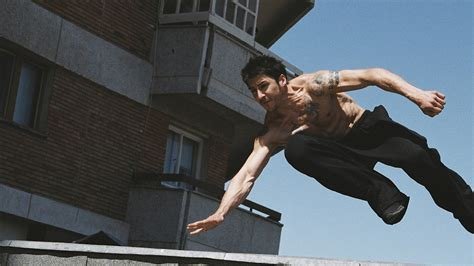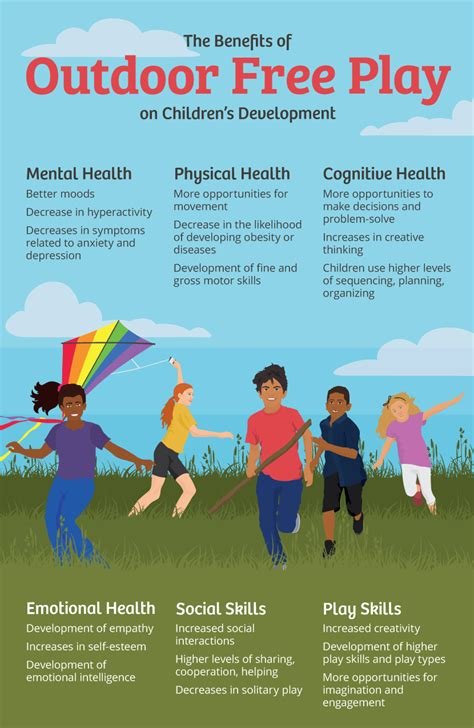How to Do Movie Stunts Safely
Lights, camera, action! Movie stunts are an essential part of the film industry, adding thrills and excitement to some of our favorite movies. However, behind every heart-stopping stunt is a team dedicated to ensuring the safety of everyone involved. In this blog post, we’ll delve into the world of movie stunts and discuss the crucial elements of performing them safely. From understanding the importance of safety to selecting the right stunt coordinator, we’ll cover everything you need to know to ensure that your movie stunts are not only jaw-dropping but also conducted with the highest level of safety in mind. Whether you’re an aspiring stunt performer or simply curious about the inner workings of movie stunts, this post will provide valuable insight into the world of stunt work and the measures taken to execute it safely. So, grab your safety gear, and let’s dive in!
Understanding the Importance of Safety
Safety is an essential aspect of any activity, particularly in high-risk environments such as film sets, construction sites, or industrial settings. Ensuring safety is crucial for preventing injuries, fatalities, and costly accidents. Without a commitment to safety, individuals and organizations are at risk of facing legal, financial, and reputational consequences. Therefore, understanding the importance of safety is paramount for maintaining a secure and productive working environment.
One of the key benefits of prioritizing safety is the preservation of human life. For instance, in the film industry, stunt performers often face significant risks while executing complex stunts. The implementation of safety measures, such as harnesses, protective padding, and coordination with stunt coordinators, is essential for preventing serious injuries and fatalities. Similarly, in construction and industrial settings, adherence to safety protocols can minimize the likelihood of accidents and safeguard the well-being of workers.
Moreover, a focus on safety contributes to the efficiency and success of projects. By minimizing the occurrence of accidents and injuries, organizations can maintain consistent workflow, avoid costly delays, and improve overall productivity. Additionally, a commitment to safety demonstrates a responsible and ethical approach to operations, which can enhance the reputation and credibility of businesses.
Ultimately, understanding the importance of safety is about valuing the well-being and security of individuals, fostering a culture of accountability, and promoting sustainable success. It is a fundamental aspect of any operation, and its significance cannot be overstated.
Choosing the Right Stunt Coordinator
When it comes to executing any kind of stunt, safety should always be the number one priority. This is why choosing the right stunt coordinator is crucial to the success of any production. A competent and experienced stunt coordinator will have the knowledge and expertise to plan, choreograph, and execute stunts in a safe and controlled manner.
Before selecting a stunt coordinator, it is important to thoroughly research their background and qualifications. Look for someone who has a proven track record of success in coordinating stunts for film, television, or live performances. Check for any certifications or memberships in professional stunt organizations, as these can be indicators of a coordinator’s commitment to safety and excellence.
In addition to a strong professional background, it is also important to find a stunt coordinator who possesses strong communication and leadership skills. Stunt work often requires collaboration with a variety of different professionals, including directors, producers, and fellow stunt performers. The ability to effectively communicate and coordinate with others is essential to ensuring that stunts are executed safely and successfully.
Ultimately, the right stunt coordinator will be someone who prioritizes safety above all else and is dedicated to creating an environment where creativity and performance can thrive without putting anyone at unnecessary risk.
Proper Training and Preparation
Proper training and preparation are crucial elements in ensuring the safety of stunt performers in the film industry. Training involves equipping stunt performers with the necessary skills and knowledge to execute complex stunts with precision and accuracy. This includes physical training to enhance strength, agility, and endurance, as well as technical training on the specific stunts they will be performing. Without proper training, stunt performers are at a higher risk of injury and accidents.
Preparation goes hand in hand with training, as it involves meticulous planning and rehearsal of stunts before they are performed on set. This includes scouting locations, assessing potential hazards, and creating a detailed plan for each stunt. Preparation also involves ensuring that all safety equipment and tools are in place and in working order, as well as coordinating with the entire production team to ensure that everyone is on the same page.
Stunt performers must undergo continuous training to stay updated on the latest safety protocols and techniques. This may include attending workshops, refresher courses, and regular practice sessions to maintain their skills. Additionally, thorough preparation involves conducting safety drills and mock stunts to simulate real-life scenarios and identify any potential risks or issues that may arise during actual performances.
By prioritizing proper training and preparation, production teams can minimize the risks associated with stunts and create a safer working environment for everyone involved. This proactive approach not only protects the well-being of stunt performers but also contributes to the overall success and efficiency of the production.
Utilizing Safety Equipment and Tools
When it comes to executing stunts or working in high-risk environments, safety equipment and tools play an essential role in ensuring the well-being of everyone involved. Whether it’s harnesses, helmets, padding, or specialized gear, utilizing the right safety equipment is crucial for minimizing the risks and potential injuries.
By utilizing safety equipment and tools that are specifically designed for the tasks at hand, stunt performers and crew members can significantly reduce the impact of any potential accidents. It’s important to not only have the necessary safety gear available but also ensure that it’s in optimal condition and properly fitted for each individual.
In addition, ongoing training and familiarization with the proper use of safety equipment and tools is vital for everyone involved in stunt work. This includes understanding how to inspect and maintain the gear, as well as knowing when and how to use it effectively in different scenarios.
Furthermore, having a designated safety officer or coordinator on set who can oversee the proper utilization of safety equipment and tools, as well as monitor adherence to safety protocols, is crucial for maintaining a secure working environment.
Implementing Controlled Environments
Implementing Controlled Environments
When it comes to ensuring safety on a film or television set, one of the most important aspects is implementing controlled environments. This involves taking measures to control various factors such as lighting, noise, weather conditions, and other environmental elements that could potentially pose a risk to the cast and crew.
By implementing controlled environments, production companies can minimize the potential for accidents and injuries. This can be achieved through the use of soundstage facilities, controlled lighting setups, and climate-controlled spaces that provide a safe and predictable working environment for everyone involved in the production.
Furthermore, implementing controlled environments also involves the use of proper ventilation, air quality monitoring, and the adherence to safety protocols to prevent hazardous conditions from arising. By taking these measures, production teams can create a safer and more controlled working environment, thereby reducing the risk of accidents and ensuring the well-being of everyone on set.
In conclusion, implementing controlled environments is crucial for maintaining safety on a film or television set. By taking the necessary steps to control various environmental factors, production companies can create a safer working environment for their cast and crew, ultimately minimizing the risk of accidents and injuries.
Maintaining Clear Communication and Coordination
Clear communication and coordination are essential elements in ensuring the safety of all individuals involved in any production, especially in high-risk activities such as stunts and special effects. It is important for everyone on set to be on the same page and understand each other’s roles and responsibilities in order to prevent accidents and mishaps.
Utilizing clear communication methods such as two-way radios, hand signals, and pre-established codes can help bridge any communication gaps that may arise during the production process. It’s crucial for everyone to be aware of the safety protocols and emergency procedures, and to be able to convey information quickly and effectively in case of any unforeseen circumstances.
Furthermore, maintaining a clear chain of command and organizational structure can help streamline decision-making processes and ensure that everyone is informed and accountable. By delegating specific roles and responsibilities to trained professionals, and having a designated stunt coordinator oversee all safety measures, the risk of miscommunication and confusion can be greatly minimized.
Lastly, encouraging an open and inclusive culture where individuals feel comfortable voicing their concerns and ideas can contribute to a more efficient and safe production process. Allowing for feedback and conducting regular safety meetings can help address any potential communication barriers and foster a collaborative and safe work environment.
Frequently Asked Questions
What is the importance of safety in movie stunts?
The importance of safety in movie stunts cannot be overstated. It is crucial to prioritize the safety of all performers and crew members involved in the stunt.
How do you choose the right stunt coordinator for a movie?
When selecting a stunt coordinator for a movie, it is important to consider their experience, expertise, and commitment to safety. It’s also essential to check their previous work and references.
What kind of training and preparation is needed for movie stunts?
Proper training and preparation for movie stunts involve rigorous physical and mental conditioning, as well as rehearsals and understanding the specific requirements of each stunt.
What safety equipment and tools are essential for movie stunts?
Safety equipment such as harnesses, helmets, pads, and other protective gear are essential for movie stunts. Additionally, specialized tools and equipment may be required for specific stunts.
How can controlled environments be implemented for movie stunts?
Controlled environments for movie stunts can be achieved through meticulous planning, set design, and the use of safety barriers, spotters, and other measures to minimize risks.
Why is clear communication and coordination crucial for movie stunts?
Clear communication and coordination are essential for ensuring that everyone involved in the stunt is on the same page, understands their roles, and can respond quickly to any changes or emergencies.
What are the key takeaways for safely executing movie stunts?
The key takeaways for safely executing movie stunts include prioritizing safety, choosing the right professionals, thorough training and preparation, utilizing safety equipment, implementing controlled environments, and maintaining clear communication and coordination.





